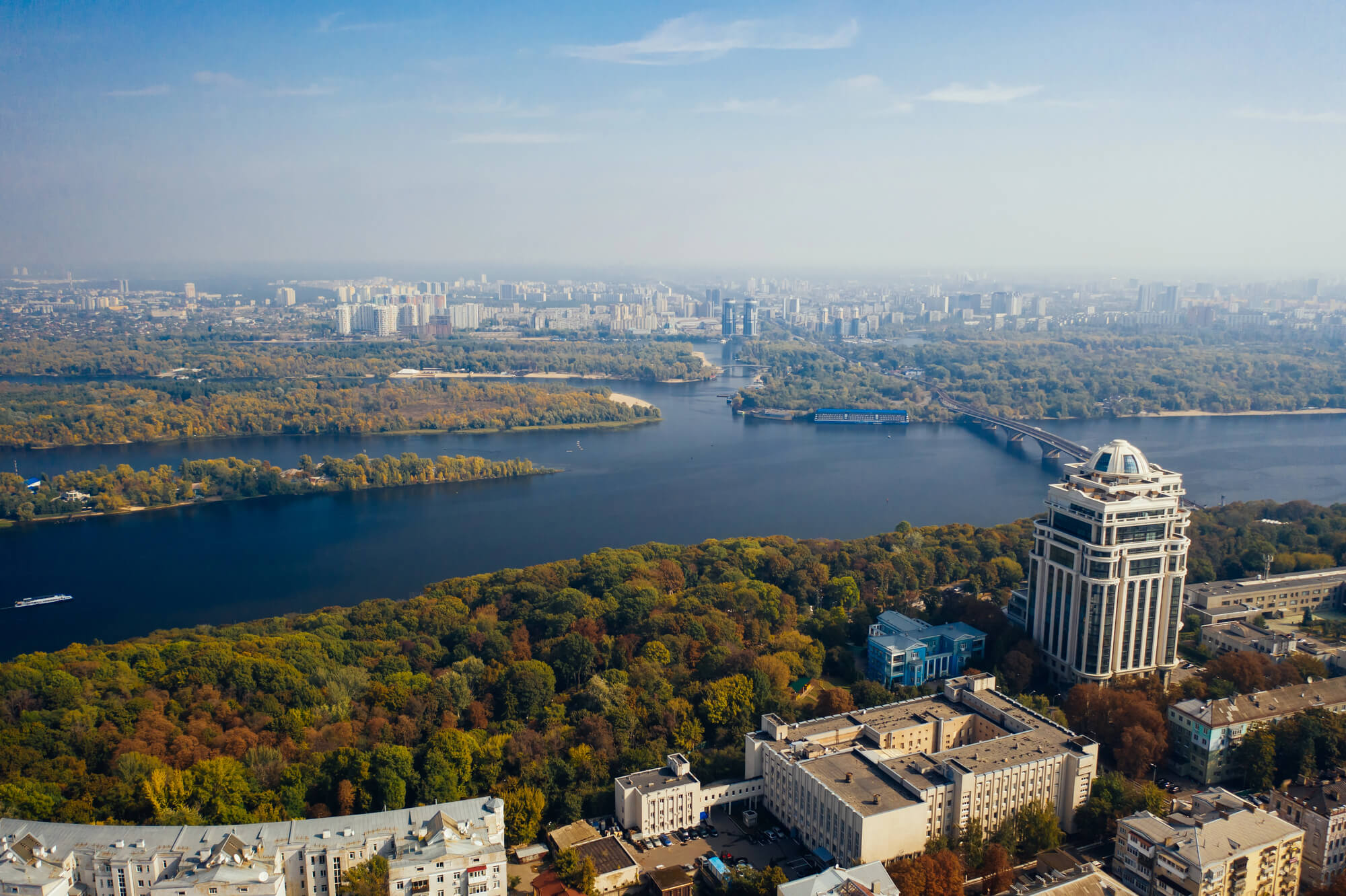Negative migration trends were observed in Ukraine even before the full-scale invasion, and events after February 24, 2022, only exacerbated them. Does Ukraine really feel a shortage of people today? Is there a demand for the return of refugees? How does this affect the economy, and what steps is the state taking to reintegrate those who have been displaced?
We discussed these issues within the framework of the international conference “Rebuilding Ukraine: for people and about people,” organized by VoxUkraine, with the support of The National Endowment for Democracy.
During the panel discussion, the following speakers shared their thoughts:
- Daryna Marchak, First Deputy Minister, Ministry of Social Policy;
- Karen Whiting, Deputy Representative at the United Nations High Commissioner for Refugees (UNHCR) in Ukraine;
- Hlib Vyshlinsky, Executive Director, Center for Economic Strategy (CES);
- Svitlana Slipchenko, Head of VoxCheck, NGO Vox Ukraine;
- Oleksandr Yavtushenko, Head of the Council for Internally Displaced Persons at the Kyiv Regional State Administration, lawyer, and human rights advocate.
We have published separate columns featuring key points from the speeches of Karen Whiting and Oleksandr Yavtushenko, so this publication is dedicated to the core points from the speeches of other speakers.
Refugees and Ukraine’s resilience
Hlib Vyshlinsky, Executive Director at CES
The connection between Ukrainians emigrating abroad and the economy can be viewed from both a long-term and a short-term perspective.
The long-term component involves considering how sustainable Ukraine’s future as a state can be. What economic model should Ukraine adopt to ensure stability with a smaller population? How aggressively should we work to increase the number of people living in Ukraine? These are pretty complex questions.
The challenge lies in how well we can maintain social, transportation, and educational infrastructure, as they were designed for a larger population. Another question is how much population would be sufficient to adequately respond to external aggression if necessary.
A more short-term and straightforward question is: how do we ensure economic stability and, ideally, economic growth? An even more immediate yet clear objective is to provide an adequate amount of tax revenue. We need financial resources to respond to enemy aggression. This is one reason why restrictions on men leaving Ukraine still persist. A critical mass of economic activity and tax payment is needed for the country to defend itself. Next comes the question of how the economy can grow in response to existing domestic and external demand. Looking at the ratio of job vacancies to resumes, there is an apparent shortage of workers in sectors that were already experiencing shortages before the war. Primarily, these are the so-called “blue-collar workers,” namely, industrial sectors, which now include construction.
Currently, we can talk about how the limitation of the labor force, in addition to restricted consumption, negatively impacts economic growth. In the short term, reduced consumption means lower economic activity, resulting in lower tax revenue and fewer opportunities for the government to stimulate the economy. This makes our country less attractive to direct foreign investment.
We thank Alina Krupyanyk, the Reform Index project assistant, for transcribing the speech.
How Ukraine plans to support internally displaced persons
Daryna Marchak, Deputy Minister of Social Policy
Today, according to official data, Ukraine has approximately 4.9 million internally displaced persons (IDPs). Among them, more than a million have been displaced for the second time.
Reintegration of these people is crucial for us. Depending on the effectiveness of the state and local policies regarding internally displaced persons, an individual may eventually lose their IDP status or may retain it for a long time, if not indefinitely.
Traditionally, social policy in Ukraine has been associated with payments, as for thirty years, it ignored the tools of citizen support used worldwide. In reality, the main focus should not be on payments. A family or an individual facing challenging circumstances must have someone to lean on, guide them, and help them through tough situations. Effective policy regarding IDPs should help people become fully integrated into a new community within a few years of displacement, overcome the stress of displacement, and simply move on with their lives.
How can this be achieved? Several key things are needed: first, families must have housing; second, families must have a source of their own income; third, families must not be stigmatized; they should not be treated with caution (“different from everyone else”).
We are now creating a toolkit for such assistance so that IDP families can return to independent living. To achieve this, we are using the most common tool worldwide but still unfamiliar in our country — social services. For example, when someone needs a job, a specialist will help them understand the specific skill needs in a particular community or region, inform them about retraining opportunities, and assist them in finding employment.
Another critical development direction for us is providing care services. The largest recipient cities for internally displaced persons are million-person cities such as Dnipro, Zaporizhzhia, and Kharkiv. For young mothers who have moved there from occupied areas, one of the biggest problems is the lack of kindergardens. One solution to this problem is the “Municipal Nanny” service, which entails the state covering the cost of a nanny for a child. Another common situation is having family members with disabilities or elderly individuals who require care from non-disabled family members. As a result, the caregiver effectively drops out of the labor market and loses a source of income. Therefore, an important direction for the state is the development of caregiving services. Care services for family members are extremely important not only for communities but also from a labor market perspective because every year, thousands of families lose the opportunity to participate in the labor market due to the need to care for people who have become disabled as a result of serious illnesses.
In the budget for the next year, we have allocated over a billion hryvnias for developing key social services. At the same time, we believe that the most the Ministry can do is to direct and assist in developing local communities and refocus support tools from less effective to more effective ones. We analyze how communities spend their social support funds and see that payments often predominate. Instead of providing individuals with the support format they need.
Challenges for the return of Ukrainians from abroad
Daryna Marchak, Deputy Minister of Social Policy
Such an approach should be applied not only to internally displaced persons but also to the return of people from abroad. Considering that negative migration trends and a critical demographic situation were observed even before February 24, 2022, we need to talk about the return of all Ukrainian citizens from abroad.
First, among the reasons for poor demographics are very low birth rates. In 2021, the fertility rate per woman was 1.16, while it should be 2.2 for population replacement. Thus, even before the full-scale war, Ukraine’s birth rate was half of what was necessary to prevent population decline. The second factor is premature mortality. In Ukraine, premature mortality (deaths from avoidable circumstances such as road accidents, cardiovascular diseases, workplace injuries due to ignoring safety conditions, etc.) was particularly high, especially among working-age men, even before the war, compared to neighboring countries, particularly Poland. These two factors have existed for a long time and have been greatly exacerbated by the war.
For a person to return from abroad, they need to know where they will live, where they will work, and who will care for their young children or family members in need of care. Our focus is building a comprehensive approach and developing the capacity to provide social services within communities. Moreover, social services entail more than just funding for institutions; they also involve investing in the development of small and medium-sized businesses within each community. By developing social services and creating demand for them, we can generate employment opportunities at the local level.
There is also the question of social cohesion. This means that we currently lack societal consensus on how we as a society perceive people who have left. Some argue that they should return, while others disagree, saying they haven’t experienced what the country has gone through during this period of time. Acceptance of different experiences and tolerance towards them should be a matter of public discussion. Otherwise, it could become a barrier to the return of citizens.
Narratives of Russian propaganda related to internally displaced persons and refugees
Svitlana Slipchenko, Head of VoxCheck at NGO Vox Ukraine
Certain social constructs and factors (fears, stereotypes, beliefs) deter people from returning. Russia, knowing these factors, tries to deepen them and play on our emotions through its disinformation campaigns. Especially on the feeling of fear, whether it’s fear for one’s own life or the lives of one’s family.
Speaking about the topic of IDPs and refugees in the context of disinformation, it is worth remembering that Russia directs its disinformation not only at the displaced persons themselves but also at the host communities, as well as at refugees and the host countries.
For internal migrants, Russia systematically spread manipulative narratives about the host communities, most often representing them as hostile in Western Ukraine. Despite open information indicating that the majority of internally displaced persons are in Kyiv, Dnipro, Zaporizhzhia, and Kharkiv, Russia portrays the western regions of Ukraine as unwelcoming to migrants, claiming that local authorities won’t help them and that the local population is Nazis. Russian propaganda attempts to construct an alternative reality in people’s minds, suggesting that the local population will supposedly hate migrants solely because they speak Russian or simply because they come from the eastern or southern regions of Ukraine.
Instead, in the host communities, Russia promotes manipulative narratives suggesting that migrants may take away local jobs and places in schools, universities, and kindergartens and that they may bring dangerous diseases. There’s also the idea that it’s better to allocate funds to the needs of the local population.
Russia did not invent these narratives in 2022 or 2023. All these stereotypes have been circulating since 2014. Russia simply reinforces them with new ideas or situations. By taking one or two pieces of news regarding migrants, Russia blows them out of proportion, portraying them as widespread phenomena, thus instilling fear in both IDPs and host communities.
Regarding refugees, the situation is similar. Russia targets those who are already refugees or are considering becoming refugees, as well as the populations of host countries. In the latter case, the most popular narratives include claims that the government will spend money on refugees instead of meeting the needs of its citizens and that refugees will supposedly take away jobs. Perhaps the most absurd narrative is the idea that Ukrainian refugees will spread Nazism to Europe. There are also claims of “massive spread of dangerous infectious diseases.” In such messages, one can observe the manipulation of statistics and exaggeration of isolated incidents on a massive scale.
On the other hand, refugees are intimidated by claims that they won’t receive help in host countries, that living conditions there are akin to concentration camps, that various forms of labor exploitation exist, and that children may be taken from refugees to be handed over to European families. With such emotionally charged messages, Russia specifically targets women, as they are the most sensitive category and, of course, the largest category among refugees. Therefore, Russia tailors messages to evoke emotions in this target group.
As there are many Ukrainians in Poland, propagandists have specifically targeted fake news about refugees toward this country. Out of the entire array of disinformation on this topic, 85% is directed at Poland. This means that Russia deliberately attacks this country to undermine support for our citizens there.
The overall goal of Russia’s disinformation activity is clear: to provoke and intensify anger toward each other, as well as emotions of fear and hatred — various negative emotions. However, the ultimate goal of stirring up these emotions is to undermine our unity and support for each other and reduce the support we receive from our foreign partners.
Narratives aimed at frightening Ukrainians and discouraging them from returning home
Svitlana Slipchenko, Head of VoxCheck at NGO Vox Ukraine
First and foremost, these narratives are associated with the idea that Ukraine supposedly has no future, that Ukrainians allegedly have nowhere to return to, and that Ukraine is incapable of victory and will be divided between Russia and Poland. These are overarching narratives that Russia directs at Ukrainians to demoralize them, but they can also have a negative impact on refugees.
One cannot overlook the narratives regarding reforms. For instance, the reforms we are implementing for EU and NATO accession are perceived as leading to the destruction of the population. On the other hand, there are narratives that Ukraine will supposedly never join the EU and NATO. Here arises the logical question of why Russia has narratives that contradict each other. The logic is that if you launch thousands of false messages, at some point, people will start to believe them or at least think that “everything is not so straightforward.” On the other hand, this is testing different target groups: if it doesn’t work for some, it will work for others. Russian disinformation operates through quantity, the sheer volume of fakes, rather than their quality.
However, Russian propaganda has been unsuccessful in achieving its goals. What is needed to ensure it continues to fail? Firstly, effective government communication is crucial. It must be as robust as possible to ensure that internally displaced persons do not succumb to the intimidation of Russian propaganda. They need to know that there are a number of state aid programs aimed at helping people integrate comfortably into communities and later return home during the reconstruction phase. Secondly, it’s essential to continue the work of fact-checking projects like VoxCheck and many others operating in Ukraine. We provide data and figures that serve as a good defense for our audience against the influence of hostile propaganda. Finally, there’s important work and support for journalists who help disseminate information both through fact-checking projects and on behalf of the government.
Attention
The author doesn`t work for, consult to, own shares in or receive funding from any company or organization that would benefit from this article, and have no relevant affiliations




